UNT's research clusters are collaborative, cross-disciplinary teams composed of leading researchers, faculty, students and institutions engaged in seminal research and the synergistic exchange of ideas and resources. Faculty and student researchers from the Department of Biological Sciences are involved with the following clusters:
Developmental Integrative Biology (DIB) research cluster
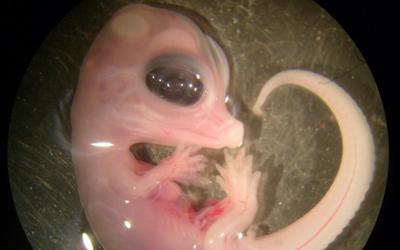 The Developmental Integrative Biology cluster employs a highly collaborative approach
to exploring developmental physiology from molecular to organismal levels, physiological
genomics relating to developmental processes, and the interactions of genes and environment
as they influence cellular, physiological, morphological, and behavioral development.
Investigators use a rich variety of animal models popular in developmental studies,
including C. elegans, fruit flies, zebrafish, northern bobwhites and other amphibians,
birds, and mammals. Through the use of diverse animal models, participants identify
major unifying principles of Developmental Integrative Biology.
The Developmental Integrative Biology cluster employs a highly collaborative approach
to exploring developmental physiology from molecular to organismal levels, physiological
genomics relating to developmental processes, and the interactions of genes and environment
as they influence cellular, physiological, morphological, and behavioral development.
Investigators use a rich variety of animal models popular in developmental studies,
including C. elegans, fruit flies, zebrafish, northern bobwhites and other amphibians,
birds, and mammals. Through the use of diverse animal models, participants identify
major unifying principles of Developmental Integrative Biology.
Learn more at the Developmental Integrative Biology research cluster website.
Signaling Mechanisms in Plants research cluster
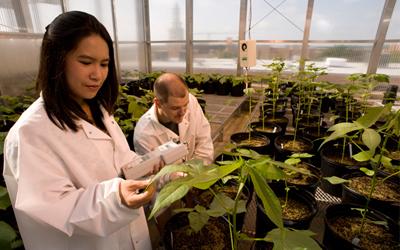 The Signaling Mechanisms in Plants research cluster draws upon existing expertise
and emerging research strengths in cell biology, biochemistry, genetics, metabolomics
and informatics to study how plants use cellular communication--a complex network
of molecular signals-- in their growth, development and defense responses to stress.
Understanding these signaling processes can help regulate crop yield and resistance
to pathogens, insects and other adverse environmental conditions. Manipulating signaling
mechanisms in plants also will lead to new technologies in agriculture, human nutrition,
phytoremediation of environmental toxicants and sustainable energy.
The Signaling Mechanisms in Plants research cluster draws upon existing expertise
and emerging research strengths in cell biology, biochemistry, genetics, metabolomics
and informatics to study how plants use cellular communication--a complex network
of molecular signals-- in their growth, development and defense responses to stress.
Understanding these signaling processes can help regulate crop yield and resistance
to pathogens, insects and other adverse environmental conditions. Manipulating signaling
mechanisms in plants also will lead to new technologies in agriculture, human nutrition,
phytoremediation of environmental toxicants and sustainable energy.
Learn more at the Signaling Mechanisms in Plants research cluster website.
Computational Chemical Biology research cluster
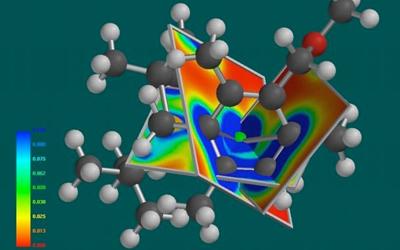 UNT has developed a superlative computational chemistry research program and one of
the strongest in the nation in electronic structure methods and applications. Within
this domain, molecules and their properties are simulated, and computational methods
are used to identify promising new chemical materials and processes. The cluster provides
innovative modeling and simulation solutions to the pharmaceutical, toxicology and
biomedical arenas.
UNT has developed a superlative computational chemistry research program and one of
the strongest in the nation in electronic structure methods and applications. Within
this domain, molecules and their properties are simulated, and computational methods
are used to identify promising new chemical materials and processes. The cluster provides
innovative modeling and simulation solutions to the pharmaceutical, toxicology and
biomedical arenas.
Learn more at the Computational Chemical Biology research cluster website.
Bio-Nano Photonics research cluster
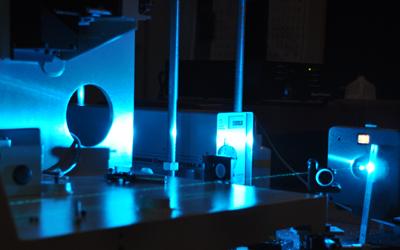 Bio-photonics, nano-photonics and bio-nanophotonics are contemporary fields that draw
upon the expertise of research from physics, materials science, chemistry, electrical
engineering, biology and medicine to form the basis for a whole range of novel technologies.
Highly trained Bio/Nano-Photonics researchers examine how light can be used to develop
new materials and devices with significant applications in medicine, telecommunications,
energy and other fields, from using nano-prisms and metal atoms in cancer research
to designing new sustainable lighting sources for homes and businesses.
Bio-photonics, nano-photonics and bio-nanophotonics are contemporary fields that draw
upon the expertise of research from physics, materials science, chemistry, electrical
engineering, biology and medicine to form the basis for a whole range of novel technologies.
Highly trained Bio/Nano-Photonics researchers examine how light can be used to develop
new materials and devices with significant applications in medicine, telecommunications,
energy and other fields, from using nano-prisms and metal atoms in cancer research
to designing new sustainable lighting sources for homes and businesses.
Learn more at the Bio-Nano Photonics research cluster website.
Materials Modeling research cluster
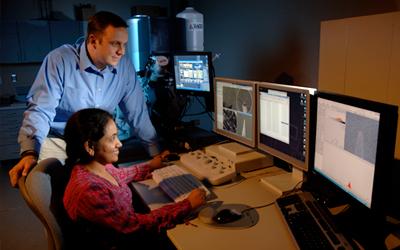 The Materials Modeling research cluster uses an interdisciplinary approach to develop
and apply advanced modeling and simulation techniques in order to improve the design
and performance of new and existing biological and man-made materials. Human tissue,
jet engine metals and greenhouse gases are examples of materials studied under various
conditions, which are sometimes extreme, such as temperature, oxidation and environmental
stress. Cutting-edge technology coupled with expertise from leading experimental researchers
positions MMRC to lead the field in fully integrated, multi-scale modeling research
and to expedite solutions for the technological challenges that face our country and
global society.
The Materials Modeling research cluster uses an interdisciplinary approach to develop
and apply advanced modeling and simulation techniques in order to improve the design
and performance of new and existing biological and man-made materials. Human tissue,
jet engine metals and greenhouse gases are examples of materials studied under various
conditions, which are sometimes extreme, such as temperature, oxidation and environmental
stress. Cutting-edge technology coupled with expertise from leading experimental researchers
positions MMRC to lead the field in fully integrated, multi-scale modeling research
and to expedite solutions for the technological challenges that face our country and
global society.
Learn more at the Materials Modeling research cluster website.
Renewable Bioproducts research cluster
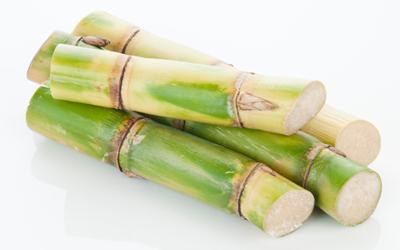 A new discipline of engineering is emerging based on green chemistries. Plant scientists
and other biologists in the Renewable Bioproducts research cluster design, develop
and implement sustainable, multifunctional biosolutions and discover how to harness
the unique chemical properties of plants, bacteria and various bioagents to achieve
ecologically safe, green solutions that outperform their non-renewable counterparts.
Research spans development and deployment, with sustainable applications including
alternative motor oils, solar cells, biodegradable consumer packaging and composite
fibers used in the construction of buildings.
A new discipline of engineering is emerging based on green chemistries. Plant scientists
and other biologists in the Renewable Bioproducts research cluster design, develop
and implement sustainable, multifunctional biosolutions and discover how to harness
the unique chemical properties of plants, bacteria and various bioagents to achieve
ecologically safe, green solutions that outperform their non-renewable counterparts.
Research spans development and deployment, with sustainable applications including
alternative motor oils, solar cells, biodegradable consumer packaging and composite
fibers used in the construction of buildings.
Learn more at the Renewable Bioproducts research cluster website.
Sub-Antarctic Ecosystems and Biocultural Conservation research cluster
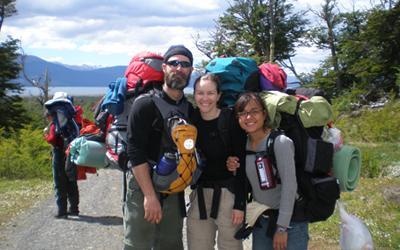 Begun as a local effort at the Omora Ethnobotanical Park in 2000, the program today
is an international and interdisciplinary venture, whose partner institutions in the
United States and Chile work to integrate the ecological sciences and environmental
ethics. As a long-term socio-ecological research, education and conservation program
in the Cape Horn Biosphere Reserve, the Omora Alliance is developing innovative ways
to address intertwined environmental and social problems such as global ecological
change, invasive exotic species, cultural homogenization and sustainable development.
The term biocultural conservation attempts to express the intrinsic link between human
cultures and the environment. It also is an effort to place emphasis on the fact that
often culture diversity is as endangered, or more so, than species diversity in many
places. In the Cape Horn Biosphere Reserve (CHBR), researchers have placed special
attention to this link, which requires a transdisciplinary approach to study, conserve
and communicate these findings. The work in the CHBR links diverse approaches including
environmental ethics, Yaghan traditional ecological knowledge, ecology, art and policy
making, among others.
Begun as a local effort at the Omora Ethnobotanical Park in 2000, the program today
is an international and interdisciplinary venture, whose partner institutions in the
United States and Chile work to integrate the ecological sciences and environmental
ethics. As a long-term socio-ecological research, education and conservation program
in the Cape Horn Biosphere Reserve, the Omora Alliance is developing innovative ways
to address intertwined environmental and social problems such as global ecological
change, invasive exotic species, cultural homogenization and sustainable development.
The term biocultural conservation attempts to express the intrinsic link between human
cultures and the environment. It also is an effort to place emphasis on the fact that
often culture diversity is as endangered, or more so, than species diversity in many
places. In the Cape Horn Biosphere Reserve (CHBR), researchers have placed special
attention to this link, which requires a transdisciplinary approach to study, conserve
and communicate these findings. The work in the CHBR links diverse approaches including
environmental ethics, Yaghan traditional ecological knowledge, ecology, art and policy
making, among others.
Learn more at the Sub-Antarctic Ecosystems and Biocultural Conservation research cluster website.